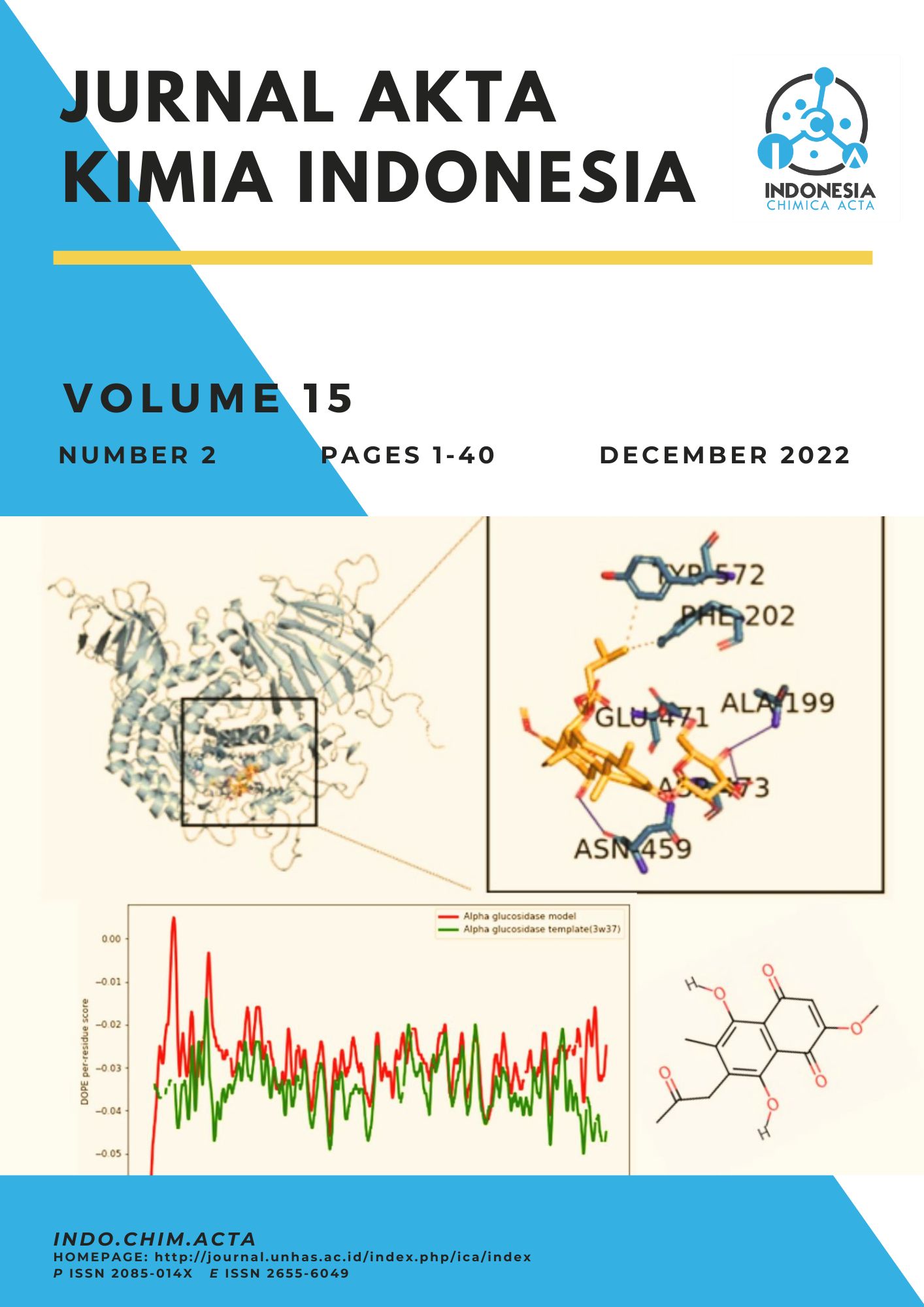Main Article Content
Abstract
The objective of this research was to see how the molarity of Iron(II) sulfate (FeSO4) solution affected the coloring of the Prussian blue pigment produced, to find the best synthesis conditions. The coprecipitation methods were used to synthesize Prussian blue from FeSO4 and K3[Fe(CN)6] solutions. The molarity of iron(II) sulfate (FeSO4) was varied to 0.005 M, 0.0025 M, and 0.00125 M in this research, with the resulting products referred to as K1, K2, and K3. The UV-Visible spectrophotometer was used to analyze the produced pigment. The molarity of Iron(II) sulfate (FeSO4) impacts the final Prussian blue pigment, as observed in the experiment with variations in the molarity of FeSO4. The optimum color of Prussian blue, with a peak near-standard UV-Visible spectra at 686 nm, was produced at 11.85 mM FeSO4 molarity, which was very much by the standard absorbance wavelength Prussian blue pigment.
Article Details

This work is licensed under a Creative Commons Attribution-ShareAlike 4.0 International License.
How to Cite
Sudirman, N. (2023). Optimization of FeSO4 Molarity for Synthesis of Prussian Blue Pigment from Iron Sand from Sunur Beach Estuary, Pariaman. Jurnal Akta Kimia Indonesia (Indonesia Chimica Acta), 15(2), 21-25. https://doi.org/10.20956/ica.v15i2.20087
